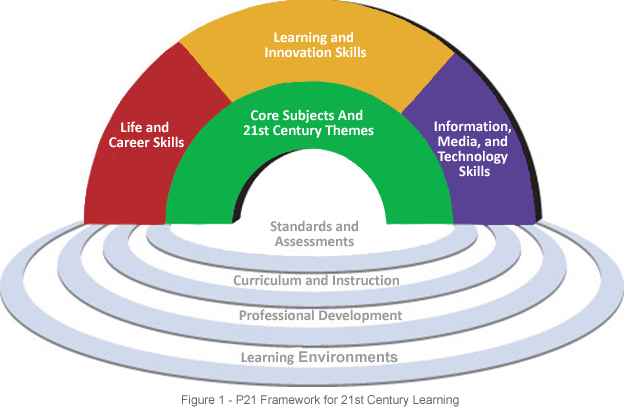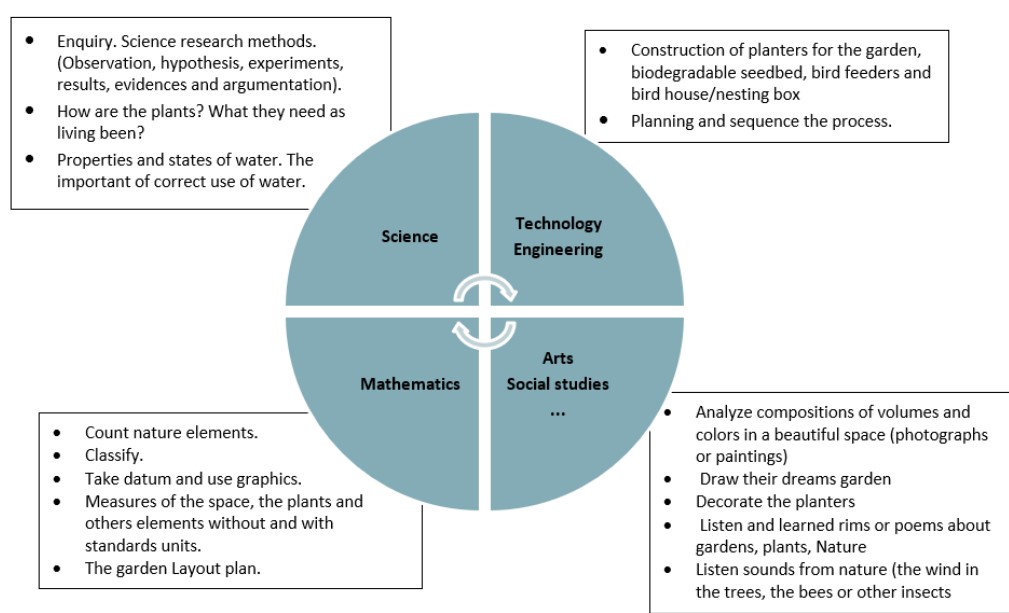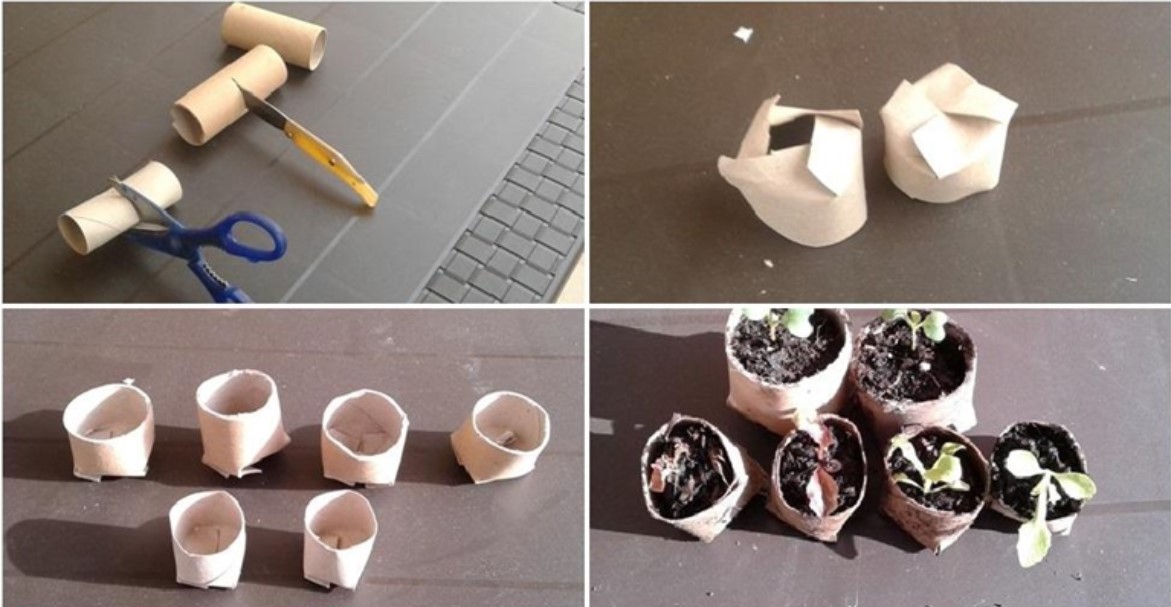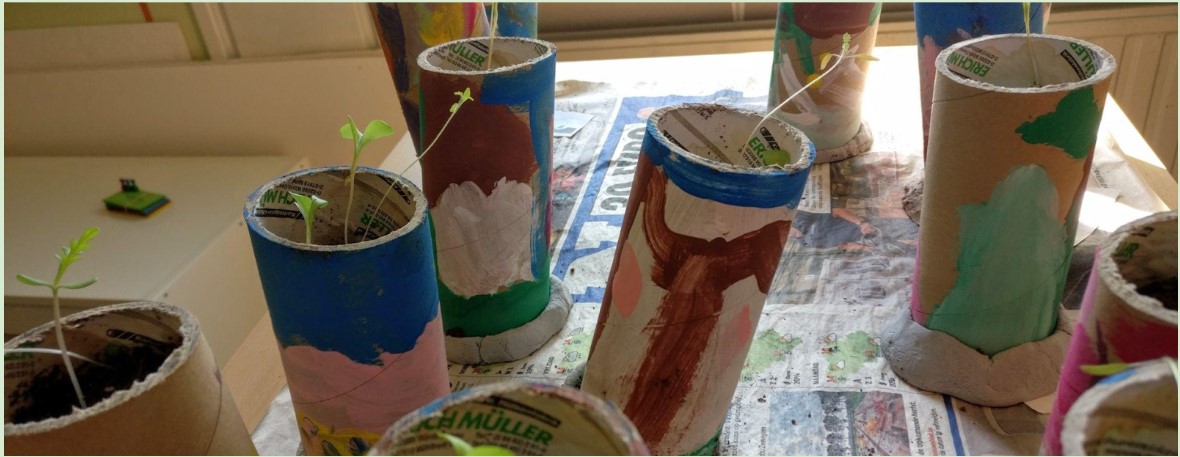2 Importance of STEM literacy and 21st century skills
In this chapter you will learn about:
- What is the importance of STEM literacy: link with society and sustainable development?
- How are STEAM education and 21st century skills linked?
- What is the role of computational thinking skills in STEAM education?
As defined by UNESCO, literacy is the ability to identify, understand, interpret, create, communicate and compute, it involves a continuum of learning in enabling individuals to achieve their goals, to develop their knowledge and potential, and to participate fully in their community and wider society (https://en.unesco.org/themes/literacy). Being literate used to mean being able to read and to write, but now literacy covers more than that. To be literate today means also to be STE(A)M literate and that is to possess the skills needed to succeed in our technology-shaped world.
The NRC defines STEM literacy as “the knowledge and understanding of scientific and mathematical concepts and processes required for personal decision making, participation in civic and cultural affairs, and economic productivity”. In our increasingly technology-driven world, STEM literacy seems crucial, not just to have qualified scientists and engineers, but to have informed, healthy and happy citizens living in just, inclusive and sustainable societies.
We are all born with curiosity and a need for action, need to explore, understand, control and change the way things work. We all have potential for skills such as analysing, problem solving, designing and creating. Developing STEM literacy among students is about encouraging and empowering them to develop and enhance those skills in order to be fulfilled, productive, knowledgeable citizens. Today, more than ever, in order to be an informed voter, a qualified worker or just a functional citizen facing everyday challenges such as health decisions or personal finance, you need to understand fundamental concepts of science and mathematics and to have solid problem-solving, critical thinking and decision making skills. These life skills and knowledge are actually STEM literacy in practice.
Since technologies are transforming every workplace, STEM literacy is needed not just for highly qualified STEM workers such as scientists, engineers or software developers but also for the majority of other jobs and career paths. In order to make our students competitive not just on national or European, but on the global stage, fostering STEM literacy is crucial.
Fostering STEM literacy among students is also important for motivating them to pursue careers in STEM. In the moment when the world is facing pandemic, global warming, massive migrations and other societal challenges that science should answer, we need to not only increase the number of STEM-trained professionals, but also to increase the diversity of STEM-trained professionals. We need to actively engage young people in STEM in a gender inclusive way, with special focus on empowering girls and removing barriers they encounter when showing interest in STEM because only just and equal development is sustainable development.
It is the responsibility of educational and science community and society as a whole to promote usage of STEM literacy for learning to satisfy our societal, economic, and personal needs.
Link with 21st century skills, future skills
We live in the time where we teach children for future jobs that don’t even exist yet. The world economy and industry is changing rapidly and the new generations need to be equipped with the skills to manage the fast changing world and needs in different occupations (Darling-Hammond, 2010). In order to meet the needs of the future workforce, education has to be modified. Traditional classroom methods don’t fill the task anymore and thus, interdisciplinary education programs are offered as an alternative to traditional education for the development of 21st century skills (Davies & Ryan, 2011). The importance of realizing interdisciplinary, personalized, inclusive, flexible, collaborative, student-centered, engaging and exciting teaching environments has been expressed by Cookson (2009).
In the 21st century, with the changing educational insight, the targeted skills to be acquired by the students must change as well (Moore, 2009). While students are aiming to compete in a global economy, education and skills at the K-12 level need to be aligned to this goal (Darling-Hammond 2010). For this purpose, curriculum, content, and evaluations should be adapted to student skills and needs and focused on 21st century skills (Friedman, 2005).
21st century skills help students to easily adapt to the new situation while they are being taught the new knowledge (Dede, 2010). Jerald (2009) describes the skills that individuals should have in the 21st century society; basic knowledge and skills (academic knowledge and skills), literacy skills (ability to apply academic knowledge and skills in real life) and 21st century skills (ability to use literacy and other skills at any time to succeed in different areas of life).
There is no one certain definition on what 21st century skills are. However, various institutions and researchers are conducting extensive research to explain these skills. One of the most important works was the Partnership for 21st Century Skills (P21). Partnership for 21st Century Skills (2011) explains the 21st century skills as follows (Figure 1).

Figure 1. Partnership for 21st Century Skills Fundamental Issues & 21st Century Themes (https://commons.wikimedia.org/wiki/File:Framework_for_21st_Century_Learning.svg) by Charles Fadel and Krishna Chaitanya Velaga, 19.03.2019, CC BY-SA 4.0.
Learning and Innovation Skills: Its goal is to ensure that pupils are engaged in a productive learning environment.
- Critical Thinking and Problem Solving Ability: Critical thinking entails a thorough examination and evaluation of claims, evidence, and beliefs. Problem solving abilities are useful in the twenty-first century for assisting people in solving unusual circumstances using effective techniques.
- Communication: Individuals must effectively communicate their thoughts in a variety of circumstances utilizing spoken and textual communication methods. In this direction, effective communication skills become more important.
- Collaboration: Individuals must be able to collaborate respectfully with various teams in both the educational and business environments. Students should be immersed in collaboration as a result of collaborative education approaches.
- Creativity and Innovation: The ability to generate a broad concept in order to generate new and helpful concepts.
Knowledge, Media and Technology Skills: Individuals in the twenty-first century should be able to access a variety of information, (ii) adapt to quick changes in technology tools, and (iii) contribute by working both alone and collaboratively.
- Knowledge Literacy: Accessing and critically analyzing knowledge, as well as controlling the flow of knowledge from multiple sources.
- Media Literacy: Knowing and using the most appropriate media creation tools and features to bring media products to market; understanding and using how and why media messages are developed.
- ICT (Information and Communication Technologies) literacy: Using technical tools to do research, organize data, evaluate it, and transmit it.
Life and Career Skills: Students must be cautious in today’s global competition to enhance their life and career abilities in highly competitive life and work contexts.
Furthemore, this model emphasizes that students in order to function in real life and in the future working environment require content knowledge, social, and emotional competences.
Connection between the STEM and STEAM Skills
Skills required in carrying out STEM and STEAM-related tasks include cognitive, manipulative, technological skills and collaboration and communication skills. However, future jobs need young people who have developed/are developing and can apply the broad skill-set. Therefore STEAM with including arts has been extra promising in developing an even more broader skill set.
Students gain cognitive skills in STEM-related tasks, where they learn by thinking and experiencing. Information management and processing (identifying, gathering, processing, and utilising relevant data to make decisions), critical, creative, and analytical thinking, problem solving abilities, scientific exploration, inventiveness, and computational thinking are among the cognitive talents required (Boon Ng, 2019). This set of skills is also needed in the current and also future life and jobs. As we progress further into the twenty-first century, ever-increasing amounts of data and ‘big data’ are gathered and utilised in all aspects of life. In order to generate, evaluate, interpret, analyze, and extrapolate empirical data, assess its authenticity, validity, and reliability, and communicate findings in effective ways, information processing abilities are required to identify, collect, organize, and select valid information for specific tasks.
STEAM provides students with the tools and methodologies to investigate new and innovative approaches to problem-solving, data visualization, innovation, and cross-disciplinary connections. STEAM concepts allow for deeper comprehension, innovation, and an unified education in the classroom because the arts and STEM topics naturally complement and inform each other. Students can also obtain transferable skills, commonly known as 21st century skills, through arts education. Creativity and critical thinking abilities, as well as curiosity, resilience, problem-solving, resourcefulness, teamwork, and confidence, are among these skills.
Students develop not only creativity but also self-confidence and presentation abilities through the performing arts, which are linked to STEAM education. These are abilities that will help pupils become future leaders, as they will be able to overcome fears and connect with people both intellectually and emotionally when they are encouraged to express themselves physically. Students learn cultural understanding and respect as they study the history of performing arts, which helps them grow as global citizens – another skill that will be necessary for success in the future workplace. Performing arts require students to improvise and use their body to create in the present, which allows them to think outside the box and broaden their imagination.
STEAM and computational thinking
In general terms, Computational Thinking is regarded as a process of thought, entailed in designing solutions that can be executed by a computer, a human, or a combination of both. Despite the wide variety of definitions in use, it is possible to identify a set of CT core concepts: abstraction, algorithmic thinking, automation, decomposition and generalization (Curzon et al., 2019).
Abstraction (AB): Although researchers have accepted abstraction as a central concept in computational thinking, they disagree on the meaning of it (Cetin & Dubinsyb, 2017). Piaget introduced the concept of reflective abstraction to describe children’s construction of abstract logico-mathematical structures (Beth, Mays, Piaget, 1966) and he distinguished three types of abstraction: empirical, pseudo-empirical, and reflective abstraction. According to (Cetin & Dubinsyb, 2017), reflective abstraction can be used as a tool in the study of computational thinking. They suggested that “The most common meaning of abstraction of a concept in computer science and mathematics, is extraction, that is, the idea of considering common features of several examples and building a structure or category which has all of these features”. They also address another component of abstraction, which is the decontextualization, as a way of thinking about a concept independently of any context is what makes abstraction difficult (Gravemeijer & Doorman, 1999). Wing (2008) connected abstraction with automation arguing that the mechanization of abstraction layers and the relationships between them leads to abstraction, she defined that computing is the “automation of our abstractions”.
Algorithm (AL): The term algorithm is interpreted as a step-by-step procedure for accomplishing tasks, not just in computer science, but in other disciplines (Selby & Woolard, 2013). In literature, algorithms are connected to different levels of abstraction, and we believe that the most abstract level connected to the algorithm, is its relation to the “problem” that we have to solve.
Algorithms provide solutions to problems and they have the following properties:
- They consist of a step-by –step set of instructions
- An algorithm is a finite process, i.e. it finishes at some point
Decomposition (DE): Selby and Woolard (2013) stated that “the creation of solutions requires breaking problems down into chunks of particular functionality and sequencing the chunks.
Generalization (GE): It is considered as the ability to expand from a specific to a broader applicability also related to pattern recognition. “The ability to recognize parts of solutions that have been used in previous situations or that might be used in future situations is included by Kolodner in a definition of computational thinking” (Selby & Woolard, 2013).
These main concepts are related to a set of attitudes and skills (or practices), including creating computational artefacts, testing and debugging, collaboration and creativity, and the ability to deal with open-ended problems (Grover & Pea, 2018). The question that researchers and educators in STEM education are facing is not why we need to integrate CT, but how. CT has become an integral part of science, technology, engineering, and mathematics (STEM) fields, and has been advocated as an important learning goal in education (Shen et al., 2020). Sengupta et al, (2018) highlighted the importance of grounding computational thinking in representational and epistemic practices that are central to knowing and doing in science and, more broadly, in STEM education. Computational thinking is interdisciplinary in nature (Yadav et al., 2017), so it makes good sense to continue practicing it in primary school or even early education, where all subjects are naturally blended together in the same environment for students.
In implementing CT in STEM education, the students became aware of the application of CT to their learning experience, rather than just using computers and technology. The integration of CT into STEM classrooms is relatively new. It is seen as having the potential to deepen STEM learning by positioning students as young scientists and innovators through engagement in authentic STEM practices. It has been proposed that students who learn to develop computational solutions and marshall computational tools, resources, and methods will advance their understanding of subject area content, CT skills, and awareness of modern uses of computation across STEM fields (Lee et al., 2020).
Age group: 3-6 years old children
Number of hours: 15-20
Short description of activity: The young children think about how to beautify/embellish the school yard greening it. They explore the space, the needs of the plants as living beings and decide what and where to plant. They celebrate the new green area in the school for the wellbeing of the planet, as an action for biodiversity and the climate.
Computational thinking skills:
● Abstraction;
● Pattern Recognition;
● Algorithms;
● Data collection;
● Data analysis;
● Problem decomposition.
Detailed description of the activity: https://www.steam-ct.org/p3-6agriculture

Figure 2. Short justification of STEAM-integration
This activity consists of 13 sessions to explore the next environment, learn science by doing science (children are investigatin the needs of the plants as living beings), learn mathematics in real situations (take measurements, orienting oneself on a map), making classifications, make pots and birds troughs, draw and design the garden, planning an assessing their work, etc.:
- The letter and exploration of the yard
- What are the plants like?
- Story: The little tulip
- Needs of plants
- The hotbeds workshop
- Enquiry about needs of plants
- Workshop bird feeders and nesting boxes/birdhouses or insects’ hotels
- Measure the garden
- Deep in the garden
- Knowing other gardens/Artist´s gardens
- Designing our garden (Dream our garden)
- Improving our own garden
- Presenting our garden
Respectively computational thinking skills are acquired through the following sessions:
- Abstraction (session 2, 10)
- Pattern Recognition (session 9)
- Algorithms (session 3, 5, 7)
- Data collection (session 1, 6)
- Data analysis (session 1, 6)
- Problem decomposition (session 1)


Figure 3. Results of some sessions. Photos from private collection
More examples of educational projects for CT and STEAM education are available in https://www.steam-ct.org/
Computational Thinking can be viewed as a transdisciplinary thinking practice (Li et al, 2020) and then we need to identify and design ways of integrating CT with discipline-specific STEM content learning. When looking at CT integration across different disciplines, educational design and effort can place specific attention to developing students’ CT as a general competence. CT strategies equip students with problem-solving skills, such as analyzing data, in order to make inferences and break problems down into manageable pieces. This transdisciplinary mode of instruction ensures learners are prepared to tackle real-world problems.
Project-based learning (a constructivist instructional method that engages students in constructing knowledge and learning skills) can guide the design and development of the learning environment in terms of delivering the content and fostering the development of CT with social interaction, teacher scaffolding, and hands-on activities in STEM learning. The project-based learning approach is consistent with best practices for STEM learning such as providing students with opportunities that are authentic, inquiry-based, relevant to them as learners, and supportive and collaborative (Yang et al., 2021).
Self-assessment
References
Boon Ng, S. (2019). Exploring STEM competences for the 21stCentury. IBE.
Cetin, I., & Dubinsky, E. (2017). Reflective abstraction in computational thinking. Journal of Mathematical Behavior, 47, 70–80. https://doi.org/10.1016/j.jmathb.2017.06.004
Curzon, P., Bell, T., Waite, J., & Dorling, M. (2019). Computational thinking. In A. V. Robins & S. A. Fincher (Eds.), The Cambridge handbook of computing education research.
Cookson, P. (2009). What would Socrates say? Educational Leadership, 67(1), 8–14.
Darling-Hammond, L. (2010). Teacher education and the American future. Journal of Teacher Education, 61(1–2), 35–47. https://doi.org/10.1177/0022487109348024
Davies, J., & Ryan, M. (2011). Vocational education in the 20th and 21st centuries. Management Services, 55(2), 31–36.
Dede, C. (2010). Comparing frameworks for 21st-century skills. In J. Bellanca & R. Brandt (Eds.), 21st-century skills: Rethinking how students learn (pp. 51–76). Solution Tree Press.
Friedman, T. L. (2005). The world is flat: A brief history of the 21st century. Farrar, Straus & Giroux.
Gravemeijer, K., & Doorman, M. (1999). Context problems in realistic mathematics education: A calculus course as an example. Educational Studies in Mathematics, 39(1), 111–129.
Grover, S., & Pea, R. (2018). Computational Thinking: A competency whose time has come. In S. Sentance, E. Barendsen & S. Carsten (Eds.), Computer science education: Perspectives on teaching and learning in school (1st ed., pagg. 19–38). Bloomsbury Publishing.
Jerald, C. D. (2009). Defining a 21st–century education. Center for Public education. https:. pdf, Erişim Tarihi: 27.09.2017. http://pdfs.semanticscholar.org/0252/e811a5dee8948eb052a1281bbc3486087503
Lee, I., Grover, S., Martin, F., Pillai, S., & Malyn-Smith, J. (2020). Computational thinking from a disciplinary perspective: Integrating computational thinking in K-12 science, technology, engineering, and mathematics education. Journal of Science Education and Technology, 29(1), 1–8. https://doi.org/10.1007/s10956-019-09803-w
Li, Y., Schoenfeld, A. H., diSessa, A. A., Graesser, A. C., Benson, L. C., English, L. D., & Duschl, R. A. (2020). On computational thinking and STEM education. Journal for STEM Education Research, 3(2), 147–166. https://doi.org/10.1007/s41979-020-00044-w
Moore, B. (2009). Emotional intelligence for school administrators: A priority for school reform? American Secondary Education, 37(3), 20–28.
Piaget, J., Mays, W., & Beth, E. W. (1966). Mathematical epistemology and psychology. D. Reidel.
Selby, C., & Woollard, J. (2013). Computational thinking: The developing definition, available via internet. http://eprints.soton.ac.uk/356481
SenGupta, P., Dickes, A., & Farris, A. (2018). Toward a phenomenology of computational thinking in STEM education. Computational thinking in the STEM disciplines (pp. 49–72).
Shen, J., Chen, G., Barth-Cohen, L., Jiang, S., & Eltoukhy, M. (2020). Connecting computational thinking in everyday reasoning and programming for elementary school students. Journal of Research on Technology in Education, 1–21.
Abdul Wahab, N. A., Talib, O., Razali, F., & Kamarudin, N. (2021). The big why of implementing computational thinking in STEM education: A systematic literature review. Malaysian Journal of Social Sciences and Humanities, 6(3), 272–289. https://doi.org/10.47405/mjssh.v6i3.706
Wing, J. M. (2008). Computational thinking and thinking about computing. Philosophical Transactions. Series A, Mathematical, Physical, and Engineering Sciences, 366(1881), 3717–3725. https://doi.org/10.1098/rsta.2008.0118
Yadav, A., Stephenson, C., & Hong, H. (2017). Computational thinking for teacher education. Communications of the ACM, 60(4), 55–62. https://doi.org/10.1145/2994591
Yang, D., Baek, Y., Ching, Y.-H., Swanson, S., Chittoori, B., & Wang, S. (2021). Infusing computational thinking in an integrated STEM curriculum: User reactions and lessons learned. European Journal of STEM Education, 6(1), 04. https://doi.org/10.20897/ejsteme/9560
http://static.battelleforkids.org/documents/p21/P21_Framework_Brief.pdf
